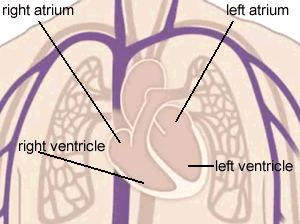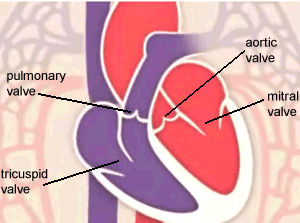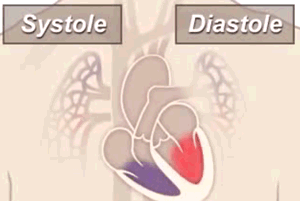The Heart
and its four chambers
Blood flows from the body into the right atrium. From there it is pumped into the right ventricle and then to the lungs via the pulmonary arteries.
Oxygenated blood, from the lungs, returns to the left atrium where it is pumped to the left ventricle and into the body via a thick walled artery known as the Aorta.

Four valves, pictured on the right, keep the blood flowing in one direction through the heart. Each valve opens and closes once per beat. Valves open in one direction and only when pushed on, much like a gate.

The beating heart goes through a cycle of contraction and relaxation. Contraction is known as systole while relaxation is known as diastole.
During systole the ventricles contract forcing blood into the body and lungs. The right ventricle contracts a little before the left ventricle.
During diastole the ventricles relax and are filled with blood coming form the atria.
The heart has its own electrical signal generating centre on top of the right atrium that keeps it beating in a coordinated manner. The signal travels from the atria to the ventricles.

Try these drag and drop activities to test your knowledge of the different parts of the heart.
Activity 1